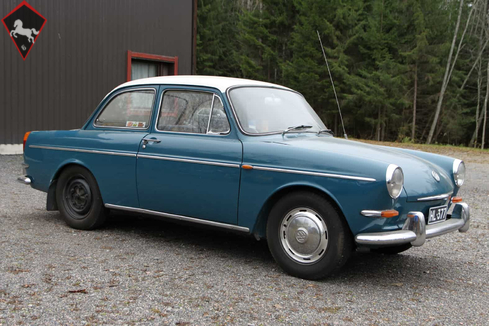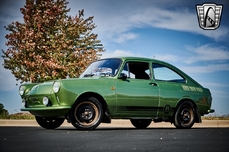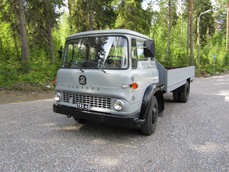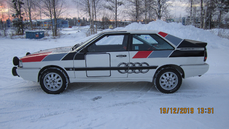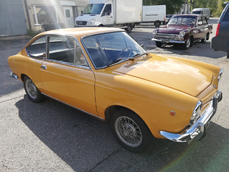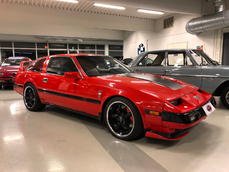Volkswagen 1500 Typ3 1964
General description :
Volkswagen type 3 1500s notchback 1964
Rare and genuine car.
More photos on our website.
2 owners besides me, history known.
Not been driven for two years, before that it was being used every year.
Not inspected (MOT/TUV) at the moment due to some holes in the bottom, requires going through it if you want it nice.
Good chrome and all parts present.
Please contact Jason from Koskin Import if you require any information as I only speak Finnish.
Message from Koskin Import: This is a private seller and not a car owned by us, we can help with the purchase if required and offer many extra services like Inspection, transport etc.
This Volkswagen type 3 1500s notchback 1964 is in Finland and can be shipped worldwide!
1964 Volkswagen 1500 Typ3 is listed for sale on ClassicDigest in Valkeakoski by Jason Holland for €6999.
Car Facts
Car type : Car Make : Volkswagen Model : 1500 Typ3 Engine size : 1.5 Model Year : 1964 Sub type : Sedan Color : Blue Location : Finland Vehicle Registration : Normal
6999 €
Seller Information
Koskin Import
Jason Holland
Finland
045 602 9441
Pirkanmaa
Ässänkaarre 22 Valkeakoski
Jason Holland
Finland
045 602 9441
Pirkanmaa
Ässänkaarre 22 Valkeakoski

People who viewed this Volkswagen 1500 Typ3 also viewed similar Volkswagen listed at ClassicDigest
Other cars listed for sale by this dealer
About Volkswagen
The Volkswagen story is indeed an intriguing tale of innovation, resilience, and post-war revival, marked by various models that have become iconic in automotive history.The People's Car (Volkswagen): Initially envisioned by Adolf Hitler in the 1930s as a "people's car" or "Volkswagen" in German, the idea was to create an affordable and practical vehicle for the German people. This concept led to the development of the Volkswagen Beetle (or the Type 1), designed by Ferdinand Porsche.
Post-War Challenges: After World War II, Volkswagen faced significant challenges. The factory was heavily damaged, and the brand's association with the Nazi regime led to a lack of interest in the car in some regions.
British Intervention - The British Army & Ivan Hirst: The British Army took control of the factory in the immediate post-war period. Major Ivan Hirst, a British Army officer, played a crucial role in reviving Volkswagen. He recognized the potential of the Beetle and advocated for its production, convincing the British military to order several thousand cars. This decision helped jumpstart the brand's revival.
Export Success and the Beetle's Global Appeal: The Beetle gained popularity not only in Germany but also globally, becoming an icon of affordable motoring. Its simple, reliable design and unique appearance made it a favorite among consumers worldwide.
Model Evolution: Over the years, Volkswagen introduced various models alongside the Beetle, each contributing to the brand's growth:
Type 2 (VW Bus or Transporter): Introduced in the 1950s, it became an iconic symbol of the hippie movement in the 1960s, loved for its spaciousness and versatility.
Golf (Rabbit in the U.S.): Launched in the mid-1970s, the Golf (or Rabbit in the U.S.) marked a shift towards front-wheel-drive, modern design, and hatchback practicality, becoming a cornerstone of the brand's success.
Passat, Jetta, and Other Models: Volkswagen expanded its lineup with models like the Passat and Jetta, catering to different market segments.
Challenges and Innovations: Despite success, Volkswagen faced challenges, including quality issues in the 1970s. However, the brand continued to innovate and develop new models and technologies.
Rise of the GTI and Global Expansion: The 1980s saw the rise of the iconic Golf GTI, a high-performance version that sparked the hot hatch trend. Volkswagen also expanded its global presence during this period.
The British intervention in reviving Volkswagen after World War II played a pivotal role in the brand's resurgence. While there might have been some tensions or competition among automotive companies in the 1950s and 1960s due to Volkswagen's post-war success, the brand's ability to produce innovative and popular models solidified its place in automotive history.
